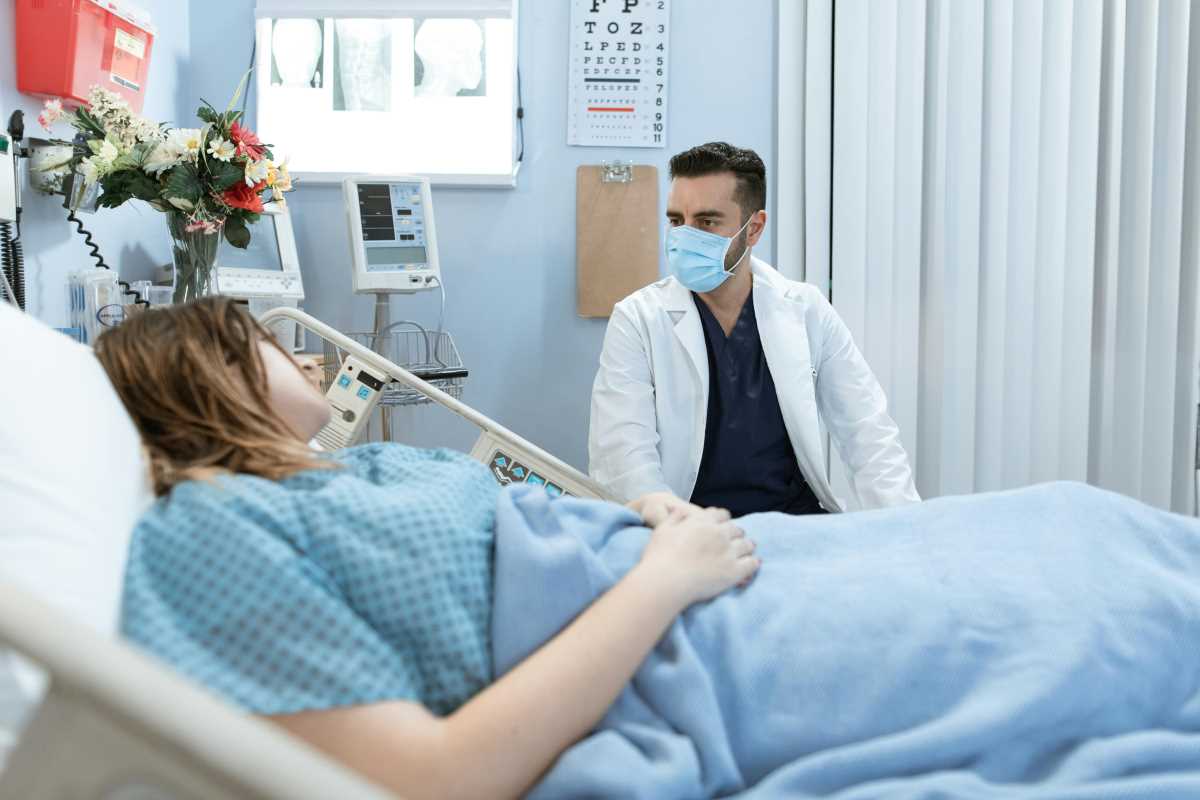Preeclampsia is a serious pregnancy condition that can develop suddenly, often without clear warning. It affects around 5-8% of pregnancies, causing health problems for both mother and baby if left untreated. The condition is marked by high blood pressure and signs of organ damage, usually starting after 20 weeks of pregnancy. Because it's so dangerous, recognizing the early symptoms is important. Understanding what preeclampsia looks like and seeking timely medical care can make a big difference in keeping you and your baby safe. We're outlining the common symptoms so you can identify the tell-tale signs early on and know when it’s time to call your healthcare provider.
1. High Blood Pressure
Blood pressure above 140/90 mm Hg can be one of the earliest indicators of preeclampsia. It often doesn’t cause noticeable symptoms on its own, so regular monitoring at prenatal visits is essential.
- What to look for: Consistently high readings during routine prenatal checkups or home blood pressure monitoring. Some women may feel a mild headache or unexplained restlessness alongside high blood pressure.
- Why it’s significant: High blood pressure restricts blood flow to the placenta and can put extra stress on the heart and kidneys, leading to complications if untreated.
2. Swelling in the Hands and Face
Mild swelling is common during pregnancy, especially in the feet and ankles. Swelling, however, that appears suddenly or worsens in your hands and face could signal preeclampsia.
- How it feels: Rings might feel tighter than usual, or your facial features might look puffier in photos or reflections.
- What it means: Excess fluid retention caused by high blood pressure is a major reason for swelling. Mention any unusual or concerning puffiness to your doctor.
3. Protein in the Urine
Routine urine tests at prenatal appointments can detect protein in the urine, which is another key indicator of preeclampsia. Proteinuria occurs when the kidneys are damaged and not filtering properly.
- What to expect during tests: Your healthcare provider will check a urine sample for protein levels. Persistent proteinuria, especially paired with high blood pressure, raises red flags.
- Why this matters: Protein leakage in the urine shows that your kidneys are stressed or damaged, one of the hallmark symptoms of preeclampsia.
4. Severe Headaches
Persistent or intense headaches that don’t improve with rest or over-the-counter medication might point to preeclampsia. These headaches are typically linked to high blood pressure or changes in brain blood flow caused by the condition.
- What to notice: Aching or throbbing pain typically located in the temples or across the forehead. The headache may feel like a migraine in some cases.
- Why it’s dangerous: Severe headaches could mean your body is struggling with elevated blood pressure, which increases the risk of serious complications.
5. Vision Changes
Sudden issues with vision are among the more noticeable symptoms of preeclampsia. Blurred vision, sensitivity to light, or seeing spots can develop rapidly and should never be ignored.
- What it looks like: Fuzzy or blurry vision, seeing stars or flashes, or having trouble focusing. Sensitivity to bright lights may also emerge.
- Why it’s concerning: These signs suggest high blood pressure is impacting blood flow to the brain or eyes, and emergency evaluation is necessary.
6. Upper Abdominal Pain
Discomfort or pain in the upper right abdomen, just below the ribs, is another symptom of preeclampsia. This pain may extend into the shoulder area or feel sharp and persistent.
- What it feels like: Aching, stabbing, or pressure-like sensations that don’t go away with changes in position or rest.
- What it signals: The pain may indicate liver inflammation or stress caused by high blood pressure, both of which are linked to worsening preeclampsia.
7. Nausea and Vomiting
Persistent nausea and vomiting in the second half of pregnancy may signal preeclampsia, especially if these symptoms weren’t present earlier in your pregnancy.
- What to watch for: Feeling sick to your stomach, frequently vomiting without another clear cause, or new nausea after 20 weeks of pregnancy.
- Connection to preeclampsia: Nausea and vomiting are caused by the body’s response to increasing blood pressure and stress on organs like the liver.
8. Reduced Urine Output
A substantial drop in how much urine you produce throughout the day could indicate preeclampsia. This symptom often goes unnoticed unless you’re paying close attention.
- How to recognize it: Urine output that’s far less than usual, along with dark-colored urine in some cases.
- Why it matters: This suggests kidney stress or impaired kidney function due to high blood pressure, a concerning sign.
9. Difficulty Breathing
Shortness of breath or a tightening sensation in the chest can develop with severe preeclampsia. Fluid buildup in the lungs may lead to this symptom, requiring immediate care.
- What to describe to your doctor: Feeling like you can’t fully catch your breath, wheezing, or a sudden chest heaviness.
- What’s happening: This may occur if preeclampsia worsens into a condition known as HELLP syndrome, which damages blood vessels and reduces oxygen flow.
When to Seek Medical Care
Preeclampsia can escalate quickly. Contact your doctor as soon as possible if you notice any combination of the above symptoms. Head straight to the emergency room if you experience sudden vision loss, sharp abdominal pain, seizures, or significant shortness of breath.
Regular prenatal care is the best way to diagnose preeclampsia early. Routine screenings for blood pressure, urine protein, and swelling alert doctors to potential problems before they escalate.
Managing Preeclampsia Symptoms
Once preeclampsia is diagnosed, healthcare providers often recommend lifestyle adjustments or medications to manage symptoms and reduce risks. Lifestyle changes like monitoring blood pressure at home, resting as directed, and sticking to a healthy pregnancy diet can support your overall care plan.
 (Image via
(Image via





